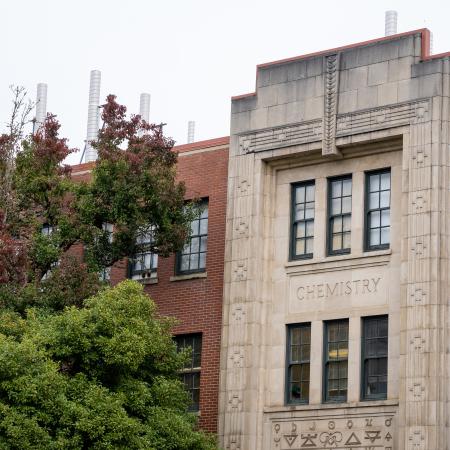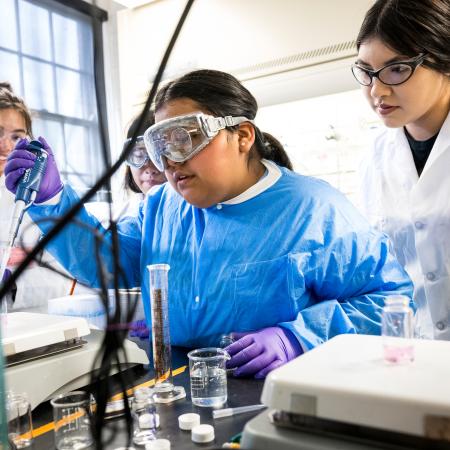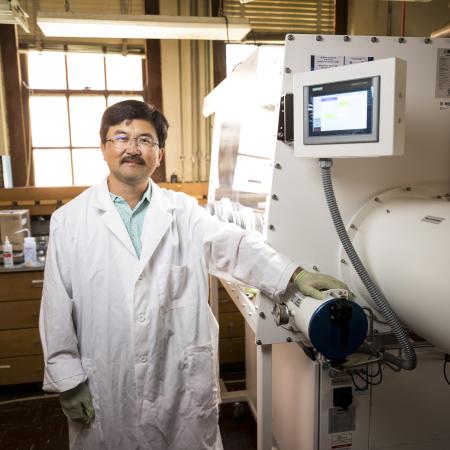Normal OSU sequences
The general chemistry requirement for the chemistry major is met by taking one of the following sequences at OSU: CH 231/261 - 233/263, 231/271 - 233/273 or 231H/261H - 233H/263H.
If a student completed the entire CH 121-123 sequence before becoming a chemistry major with grades of B or better in all courses, the student must consult with a chemistry adviser to obtain approval to substitute CH 121-123 for the normal general chemistry requirement. Additional coursework may be required.
For cases where a student initially in engineering has completed the CH 201, 202, 205 (lab) sequence before becoming a chemistry major with grades of B or better in all courses, the student must take CH 223 to fulfill the requirement of one year of general chemistry. Normally a student that failed to take the CH 205 lab course concurrently with CH 202 must complete CH 205 when available. Consult with a chemistry adviser because additional coursework may be required because CH 201, 202, 205 (lab) and CH 233/263 (or CH 233/273) provide 12 credits of the normal 15 credits of general chemistry.
Students, who start at OSU in another major, enroll in CH 121 or CH 201, and then become a chemistry major during or after fall term, must switch to CH 232/272 winter term and complete CH 233/273 during spring term. The grade in CH 121 or CH 201 must be B or higher to obtain approval from a chemistry adviser to use these courses as a substitute for CH 231/271.
Students, who start at OSU in another major, complete CH 121 with a grade of B or better and enroll in CH 122 (or complete CH 201 with a grade of B or better and enroll in CH 202 and CH 205), and then become a chemistry major during or after winter term, must enroll in CH 233/263 (or 273) spring term. The grades in CH 121 and 122 (or CH 201, 202, and 205) must be B or higher to obtain approval from a chemistry adviser to use these courses as a substitutes for CH 231/261 (or 271) and 232/262 (or 272). Otherwise students can catch up in CH 231/261 - 233/263 in the summer term. Always check with a chemistry adviser. Additional coursework may be required depending on the situation.
Transfer sequences from Oregon community colleges and universities
It is also acceptable to transfer a three-term, general chemistry sequence from Oregon community colleges or universities if the courses articulate to OSU with these OSU numbers: CH 231/261 - 233/263. For some Oregon Universities, an acceptable general chemistry sequence does not articulate to OSU as CH 231/261 - 233/263 for more technical reasons but will be allowed for the chemistry major. Detailed information on course articulation can be found on the Oregon State University undergraduate admissions webpage.
Some 100-level chemistry sequences at community colleges or universities including CH 104-106, and sometimes, CH 121-123, articulate to OSU at lower-division transfer (LDT) CH courses and cannot be used to fulfill the requirement for chemistry majors of one year of general chemistry. Specific information is found in the Summary Table of Articulation of General Chemistry and Organic Chemistry Courses from Oregon Community Colleges to OSU. For students that take courses that articulate to OSU as CH 121-123 or CH 201-202, the rules are the same as specified for OSU sequences.
General chemistry sequences transferred from institutions other than Oregon community colleges or state universities are acceptable if the courses are articulated as CH 231/261 - 233/263. Otherwise, a given transfer sequence that articulates as something such as "LD college chemistry" must be evaluated by a chemistry adviser to determine if it is equivalent to OSU CH 231/261 - 233/263 or CH 231H/261H - 233H/263H. In general, the one-year general chemistry sequence at another university will be allowed as a substitute for OSU CH 231/261 - 233/263 if the sequence is the required sequence for chemistry majors at the original institution. This substitution must be approved by a chemistry advisor based on information about the transfer course including grades and credits transferred.
For cases where a student transfers from a school based on a semester system and with one semester of an acceptable general chemistry sequence (see above), the student must enroll in CH 232/262 (or 232/272) and 233/263 (or 233/273) at OSU. A semester course covers only half of the material in the second quarter general chemistry course.
AP credit for general chemistry at OSU
Normally the chemistry department encourages all first year chemistry majors to take a year of the science majors general chemistry with lab (15 cr), either CH 231/261 - 233/263, CH 231/271 - CH 233/273 or CH 231H/261H - CH 233H/263H. Incoming chemistry majors with a score of 3 on the AP Chemistry test are required to complete both CH 232/262 (or 232/272) winter and CH 233/263 (or 233/273) spring for a grade before taking CH 334 Organic Chemistry for majors. Incoming chemistry majors with a score of 4 or 5 on the AP test are required to complete CH 233/263 (or 233/273) for a grade.
In some rare cases, if the student who has AP credit for CH 231/261 - 233/263 feels that they have had a particularly strong chemistry course in high school and believes that they are ready to start sophomore organic chemistry for majors as a first-year student, they should make an advising appointment with the Head Chemistry Advisor (currently Dr. Pastorek). The Head Advisor will evaluate the student's preparation for CH 334 (START sessions are a good time to do this). The strongest HS chemistry preparation includes but is not limited to: two years of high school chemistry with grades of A; 90 hours of chemistry laboratory experience in the AP chemistry course sequence; and at least 610 on the MTH SAT test. Students should provide at a minimum a copy of their high school chemistry course syllabus, including the title of the chemistry text used, and their laboratory notebook to confirm the laboratory experience.



